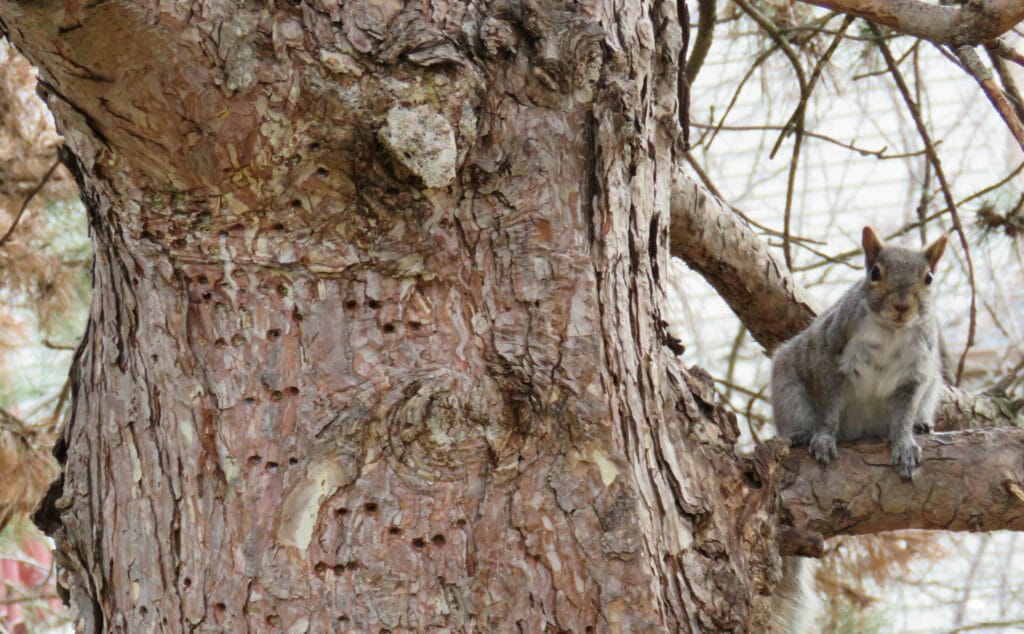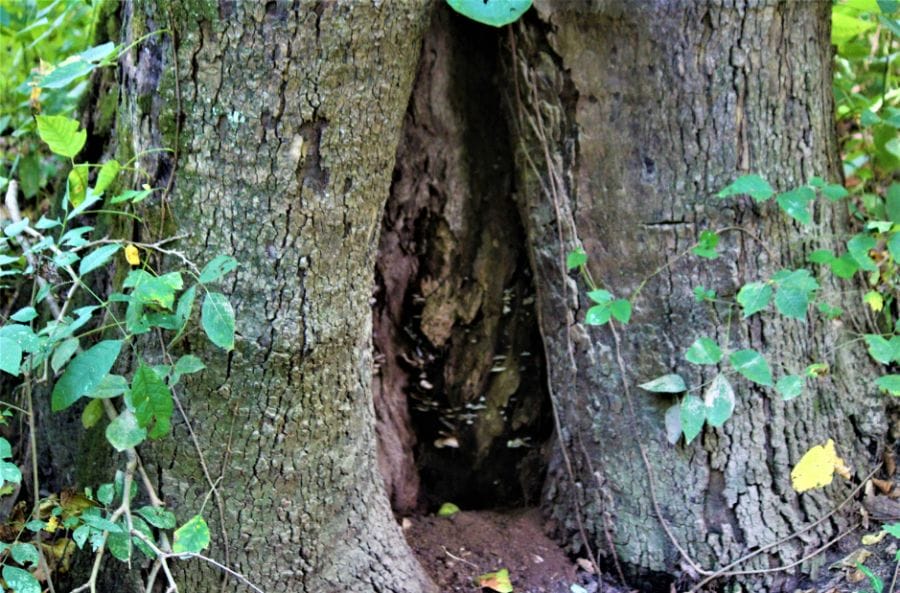Holes in trees can be disconcerting. Many homeowners are unsure about what holes indicate for tree health, or what they should do when a hole appears. In this post, our leading tree experts address tree holes and talk about how a hole could be a sign of compromised structural integrity. We discuss different kinds of holes that may be found, as well as how and why they occur. Although holes are not always a sign that there is something wrong, it is best not to take chances. If there’s a hole in your tree, be sure to contact a top licensed and insured Portland, Oregon tree care company near you, such as Urban Forest Pro to learn about potential structural damage.
In this Guide:
- Are Holes in Trees Dangerous?
- What Causes Large Holes in Tree Trunks?
- Impact of a Hole at the Base of a Tree
- Best Tree Removal Service in Portland, Oregon

Are Holes in Trees Dangerous?
Holes in trees can be dangerous if they cause the structural integrity of the tree to fail. If this happens, the whole tree or one of its main branches may fall to the ground, which could lead to injury and/or property damage. On the other hand, many tree holes do not present a problem and do not necessarily need to be filled. Our Portland arborists warn against filling holes with concrete (which was frequently recommended in the past) because this can lead to more problems.
If you are concerned about the hole for aesthetic reasons, there are foams that top arborists now use to fill holes. These foams work better than concrete, as they allow more movement when the tree sways. However, these foams cannot improve structural integrity; they are solely for aesthetic purposes. If there is a problem with the tree’s structural integrity, an arborist has other tools at her/his disposal, which can include cabling, bracing, propping up, or removal.
What Causes Large Holes in Tree Trunks?
Wondering about large holes in tree trunks? Large holes in tree trunks can arise from various factors, including natural occurrences and human activities. Natural causes such as woodpecker activity, fungal infections like heart rot, and environmental stressors such as lightning strikes can contribute to the formation of sizable cavities. Additionally, improper pruning practices, such as removing large limbs without preserving the collar, can lead to the decomposition of the wound inward, resulting in the creation of holes in the tree trunk. When cuts are made too close to the trunk and the collar is not preserved, the tree decomposes the wound, ultimately creating a void that may compromise the structural integrity of the tree. This highlights the importance of understanding both natural and human-caused influences on tree health and structure.
Here are some common reasons for holes in tree trunks:
- Splits and Cracks – Oftentimes a tree will form a split or crack in its trunk. Splits pose serious problems as they stress the tree’s structural integrity. Once a crack starts, it is likely to grow, as the tree buckles and sways in the wind. This is why it’s important to address them as early as possible. Tree cabling may be effective, but if the problem is too severe, you might need to remove a limb or even the entire tree. Our top Portland, Oregon arborists also provide safe and effective tree removal services for split trees that can’t be salvaged.
- Mushrooms and Fungi – Fungi growing at a tree’s base suggest there may be a larger problem. Hollows can also be signs of fungal infection. Since some fungi are benign, and others are harmful, it is best to let a leading arborist make the call and offer their expert advice.
- Sapsucker and Woodpecker Holes – These destructive birds chip away at tree bark to access tree sap and resident insects. Woodpeckers and sapsuckers can do serious damage as they bore small holes in trees. While these birds don’t kill trees, their feeding can weaken them and leave them more susceptible to diseases and insect infestation.
 Tree Hollows – Fungi often cause these and can be a sign of decay inside the tree, which can ultimately lead to a loss of structural integrity. Squirrel holes can also be indicative of a problem.
Tree Hollows – Fungi often cause these and can be a sign of decay inside the tree, which can ultimately lead to a loss of structural integrity. Squirrel holes can also be indicative of a problem.
Often a tree has holes but it is unclear if they are big enough to cause problems. Determining the structural integrity of a tree is as much an art as it is a science. Leading professional arborists use specialized tools to evaluate tree strength. One of these tools is called a Resistograph. It uses a small drill to test density. Trained arborists can conduct tests and carry out procedures to prevent damage and prolong a tree’s lifespan. Inspection and monitoring are key to ensuring the safety and long-term survival of the trees on your property.
Impact of a Hole at the Base of a Tree
The presence of a hole at the base of a tree raises concerns about the tree’s structural integrity and overall tree health. This can be attributed to various factors, including fungal infections, decay, or even the activity of burrowing creatures like squirrels. Whether, it’s a sign of internal decay or a potential hazard, our team of arborists uses specialized tools and proven techniques to determine the extent of the problem and recommend appropriate measures to ensure the long-term well-being of your tree.
Best Tree Removal Service in Portland, Oregon
Be sure to call a certified arborist near you today if you see evidence of structural damage or are worried about tree holes. Our top ISA-certified (International Society of Arboriculture) arborists have the skills, expertise, and tools to make the right call regarding the health and well-being of your trees.
Our nearby tree experts serve the Portland Metro area as well as Vancouver, WA, and its surrounding areas. Contact us today to find out more information about the tree removal process.
[Photo by synspectrum via CC License]
Check out our Angies List reviews.
 Tree Hollows – Fungi often cause these and can be a sign of decay inside the tree, which can ultimately lead to a loss of structural integrity. Squirrel holes can also be indicative of a problem.
Tree Hollows – Fungi often cause these and can be a sign of decay inside the tree, which can ultimately lead to a loss of structural integrity. Squirrel holes can also be indicative of a problem.